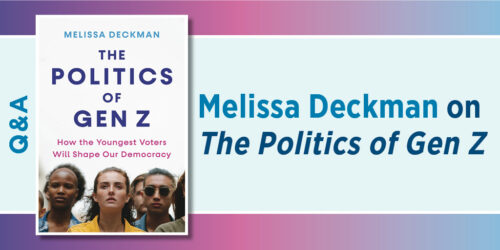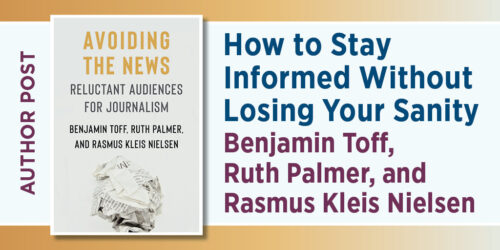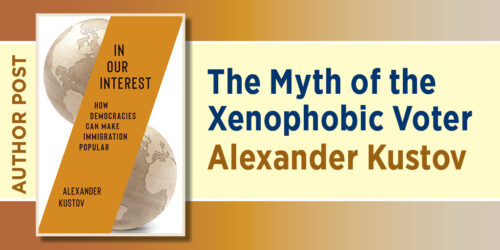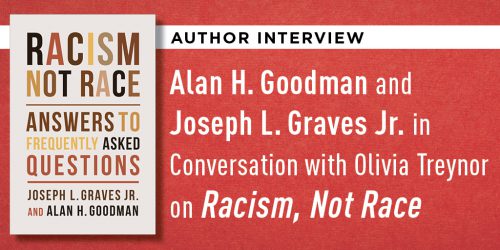Why Democrats Need to Show Up in Rural America
Nicholas Jacobs and Daniel Shea

The widening gulf between rural and urban America is becoming the most serious political divide of our day. Support for Democrats, up and down the ballot, has plummeted throughout the countryside. Rural Americans are supposedly bigots, culturally backward, lazy, scared of the future, and radical. But is it that simple? Is the country splintering between two very different Americas―one rural, one urban? In The Rural Voter: The Politics of Place and the Disuniting of America, Nicholas Jacobs and Daniel Shea pinpoint the forces that have given rise to the “rural voter.” In this Q&A, Jacobs and Shea speak to why this historical development matters for contemporary politics, and why Democrats need to rethink how they run for office in rural communities.
Q: The Rural Voter shows that the rural-urban divide is historically unprecedented. What’s changed in American politics? Why now?
Nicholas Jacobs and Daniel Shea: The divide between urban and rural areas has been a constant in our politics, going back to historical events like Shays’ Rebellion and the clash between Thomas Jefferson and Alexander Hamilton. Initially, these divisions tended to be temporary and focused on specific elections, with regional differences playing a role. However, our research suggests that the “nationalization” of rural voters began in the early 1980s due to three main factors. First, tangible changes in rural life made things tougher, with family farms disappearing, local industries closing, and rural populations dwindling and aging. Economic activity shifted to cities and suburbs, creating hardship and a sense of disconnect among rural residents. Second, popular culture started portraying rural settings as ominous or threatening, with many horror films from the 1980s onward featuring rural communities or farms as eerie backdrops, like The Texas Chainsaw Massacre and Children of the Corn. This portrayal reinforced negative stereotypes. Last, savvy GOP strategists realized they could leverage these grievances by crafting a narrative that positioned the Republican Party as the champion of “real America,” found exclusively in the countryside. Figures like Ronald Reagan, Pat Buchanan, and Sarah Palin tapped into this sentiment, emphasizing the elitism of coastal areas and mainstream media. This shift wasn’t solely at the federal level; it also impacted state legislatures and local elections significantly.
Q: How do rural voters fit into modern-day electoral politics? Why are they so influential?
Jacobs & Shea: It’s easy to dismiss rural voters. After all, they make up just a fraction of the American population—a little less than 20 percent of voters in the last few presidential elections. But election after election, they continue to vote increasingly Republican. And that uniformity gives their voice extra influence. Rural voters are as important to the Republican Party—as a percentage of the party’s coalition—as are union members to the Democrats. Rural voters are more important to the Republican Party than Black voters or young voters are to the Democrats. If rural voters stopped turning up to support Republican candidates, not only would Republicans do worse, but we wouldn’t be speaking about rural voters at all. Their influence is slightly inflated because of some institutions like the Senate and Electoral College, but the institutions are not nearly as important to understand as the politics.
Q: So, why is the Republican Party so popular in rural areas?
Jacobs & Shea: Demographics play a role here. On average, rural communities tend to be older, have a higher percentage of white residents, and have fewer college graduates—groups that typically support GOP candidates. And yet, this “composition effect” only tells part of the story. Did you know that more women in rural areas supported Donald Trump than men, and the Democratic advantage with young voters diminishes significantly in rural regions? Additionally, while rural voters often align with conservative policies, they aren’t necessarily more right-leaning than Republicans in urban or suburban areas. No, the core issue lies in the belief among rural voters that the Democratic Party doesn’t understand or prioritize their concerns or way of life. This sentiment has grown over time, contributing to a cycle: as Democratic candidates perform poorly in rural areas, the party invests less time and resources there. It gets worse for subsequent Democratic candidates. Consider this: How much effort did Hillary Clinton put into campaigning in rural areas, even in states like Wisconsin and Michigan, which traditionally lean Democratic? In short, it’s not solely about demographics or policy concerns but about rural voters feeling alienated from the Democratic Party. They feel neglected. Too often, Democrats fail to even show up. Republicans are more than happy to step in—and to further push the narrative that only they care about rural communities.
Q: How did you figure that out?
Jacobs & Shea: We asked rural voters. Simple, we know. But because rural voters are such a small portion of the electorate, it is usually quite difficult to make meaningful and statistically valid inferences about the group. You only need a little over 1,000 Americans to accurately predict patterns in the nation as a whole. But in that group, you’re only capturing 200 (and usually far fewer) rural voters. You can’t use those data to understand what’s on the minds of rural people. So we launched the Rural Voter Survey, the first and largest attempt to talk to rural voters across the country and compare their answers on issues facing their community with the views of people living outside rural America. We ended up collecting over 14,000 responses across 250 different questions to write this book. And we listened. Our conclusions don’t come from what we hoped were true—our little pet theories or confirmation of anecdotes. We were often surprised by the patterns we identified. But they are clear, robust, and make sense when you put it all together.
Q: Does that mean that Democrats are doomed in rural America? Can they win if demographics and policy don’t explain everything?
Jacobs & Shea: We delve into various examples that highlight the dynamics we discuss. Take Janet Mills, the governor of Maine, and Jarod Golden, a Democrat representing Maine’s highly rural 2nd Congressional District—they exemplify these points. We also examine Tim Ryan’s 2022 Senate run in Ohio. Although he didn’t win, he notably outperformed Biden in rural areas. The key to this success? Authenticity. Had Ryan secured the cities and suburbs like Biden did, J. D. Vance might have returned to writing fiction about Appalachia’s declining towns and villages. Oops. Another compelling example we cover is Marie Gluesenkamp Perez’s surprising congressional victory in rural Washington in 2022. Her success stands as a testament to how authenticity and a deep understanding of local issues can transcend blind partisanship.
Q: The book concludes with a clear implication: Democrats need to start showing up in rural America. Is this a “pro-Democrat” book?
Jacobs & Shea: It’s a pro-democracy book. We do not make any argument that Democrats are “better” representatives than Republicans, or that Democratic policies will help rural areas more than Republican policies. We don’t agree on the answers to those questions ourselves half the time! But we do agree that because Democrats have neglected rural areas—because Democrats either do not run candidates for office or choose not to lean into rural issues when running campaigns across geographically diverse districts—rural America suffers. And we know this to be generally true in all democracies. Our system only works when there is vibrant competition between the parties. Our system is failing in this regard, and we all lose, rural and urban. But it doesn’t have to be this way. In writing this book and talking to many people afterward, we know that Democrats do not show up in rural areas because they think they’ll lose, or that they’ll have to sacrifice progressive principles or pick up Republican talking points. That’s not the case. Rural people—all people—want leaders they can trust, who listen, who understand their communities. Divides benefit no one except those already in power.








